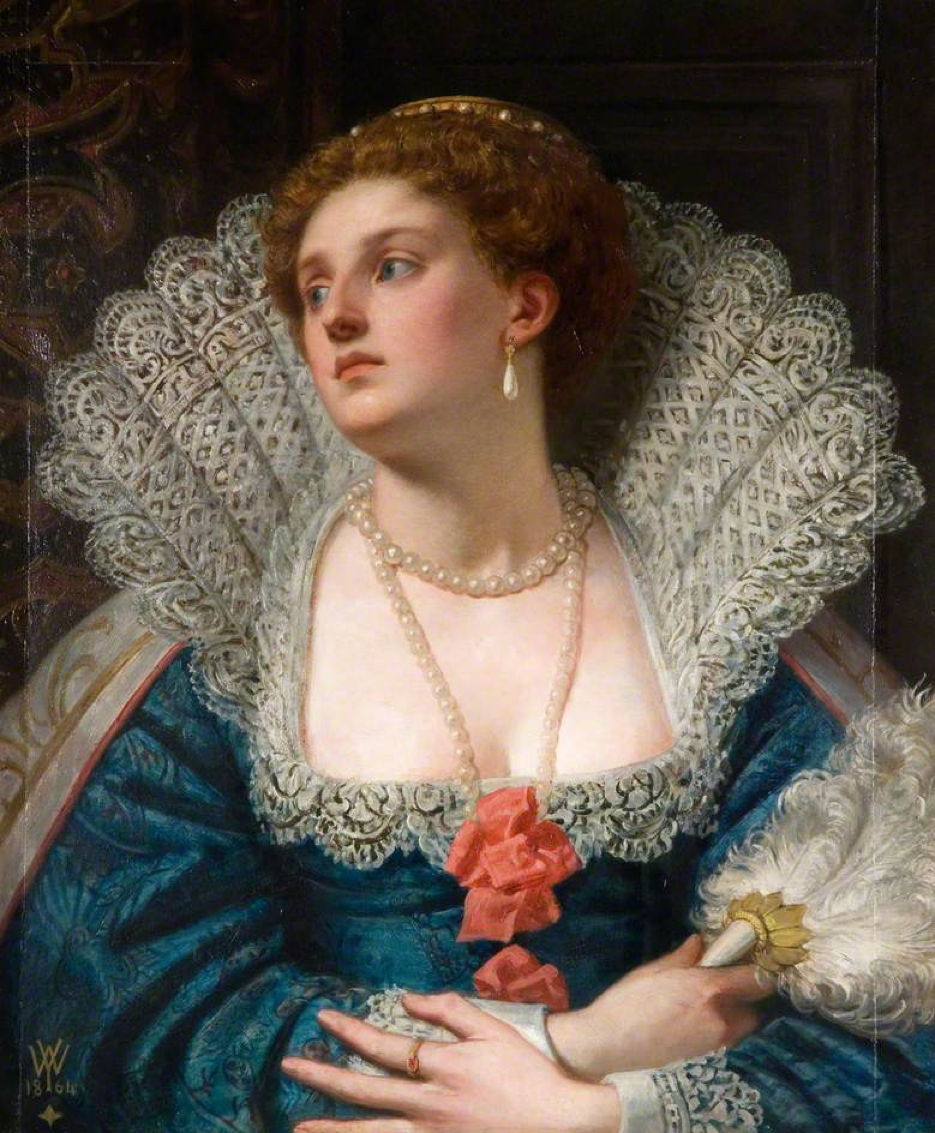William Frederick Yeames (1835–1918), who died a century ago today, is one of the many painters who is now known by a single work: in his case And when did you last see your Father? (1878). As a history painter in the day of the Pre-Raphaelites, his career was something of an uphill struggle, and in some ways, it is fortunate that one work is still remembered.
The son of a British consul in Russia, he was born in Taganrog, on the shore of the Sea of Azov, to the north of the Black Sea, then in the Russian Empire. His father died when he was only seven, so he was bundled off to Dresden in Germany to be educated, and to start learning to draw and paint. His family brought him back to Britain, where he received private tuition before travelling to Florence at the age of only 17. He studied there, and copied the Masters, before returning to London in 1859.
In England, he formed what became known as the Saint John’s Wood Clique, with Philip Hermogenes Calderon, Frederick Goodall (1822-1904), and George Adolphus Storey, who are today even less well-known that him. At the time, though, his paintings had quite a decent following, and he exhibited at the Royal Academy from 1859 on.

Yeames’ particular interest, and the basis for many of his best paintings, was the Tudor and Stuart period. In Hiding the Priest (1868-74), he shows a ‘priest hole’ used to hide Catholic priests during several purges which took place in the reign of Queen Elizabeth I. The room shown here is now known as the Punch Room, in Cotehele House, a superb sixteenth century manor house on the border between Devon and Cornwall, to the north of Plymouth, England.
A priest is shown ascending into the hidden chamber by ladder, as one of the family, at the left, watches for the arrival of ‘pursuivants’ who pursued Catholic priests during a purge.

For the Poor from about 1875 shows two nuns collecting food door-to-door to feed the poor during a bitter winter, probably at the edge of Dartmoor, Devon.

Like most of Yeames’ history paintings, And when did you last see your Father? (1878) is plausible but imaginary rather than based on historical records. It shows a Royalist household during the English Civil War between 1642-51. The men present are Roundheads, Parliamentarians, who are trying to locate and capture the head of the household, the small boy’s father.
The boy is based on Gainsborough’s famous portrait of The Blue Boy (1779), modelled here by the artist’s nephew. Although he is being questioned quite amicably if not sympathetically, the question put to him in the title of the painting exploits the openness of childhood in an effort to get the boy to betray his father’s whereabouts, an unpleasantly adult trick. Next in line is an older girl, who is being comforted by a Roundhead soldier, but is already upset.
Their mother and an older daughter wait anxiously at the far left.

Yeames was particularly fascinated by the strange story of Amy Robsart, shown here in his 1877 narrative painting of her. She was the first wife of Lord Robert Dudley, a favourite of Queen Elizabeth and allegedly one of her loves if not lovers. Elizabeth acceded to the throne late in 1558, and Dudley was called to court as her Master of the Horse. His wife Amy, née Robsart, did not follow him to court, and hardly ever saw her husband.
On the morning of 8 September 1560, when she was staying at a country house near Oxford, she dismissed all her servants, and was later found, as shown here, dead with a broken neck at the foot of the stairs. Although an inquest found no evidence of foul play, and returned a verdict of accidental death, Amy’s husband was widely suspected of having arranged her death. Speculation continues to this day.
Yeames shows Amy’s body at rest at the foot of the stairs. In the gloom above, Anthony Forster, one of Dudley’s men, is leading his manservant down the stairs when they discover Amy’s body. The implication here is that Forster murdered Amy on Dudley’s orders, which is one of many speculative accounts.

Later, Yeames painted this portrait of Amy Robsart (1884).

Towards the end of the nineteenth century, problem pictures became popular, in which viewers were encouraged to speculate over their underlying, usually melodramatic, narrative. Defendant and Counsel (1895) is one of Yeames’ several problem pictures, which would have been exhibited in London, and illustrated as an engraving in newspapers.
It shows an affluent married woman wearing an expensive fur coat, sat with a popular newspaper open in front of her, as a team of three barristers and their clerk look at her intensely, presumably waiting for her to speak.
As she is the defendant, the viewer is encouraged to speculate what she is defending: a divorce claim, or a criminal charge? This also opens the thorny issue of counsel who discover that a defendant is lying, but still mount their defence in court, and may succeed in persuading the court to believe what they consider to be false. Like And when did you last see your Father? this may be an exploration of truth and the problems posed by it.
Yeames died at the age of 82, on 3 May 1918, in the Devon Riviera resort of Teignmouth. And when did you last see your Father? was bought by the Walker Gallery in Liverpool shortly after it opened. A tableau of the painting has been in Madame Tussaud’s wax museum in London for most of the intervening years too.
Further reading
The Story in Paintings: Philip Hermogenes Calderon 1, the Bible and morals
The Story in Paintings: Philip Hermogenes Calderon 2, Shakespeare and the naked saint
The Story in Paintings: Problem pictures, John Collier and others

